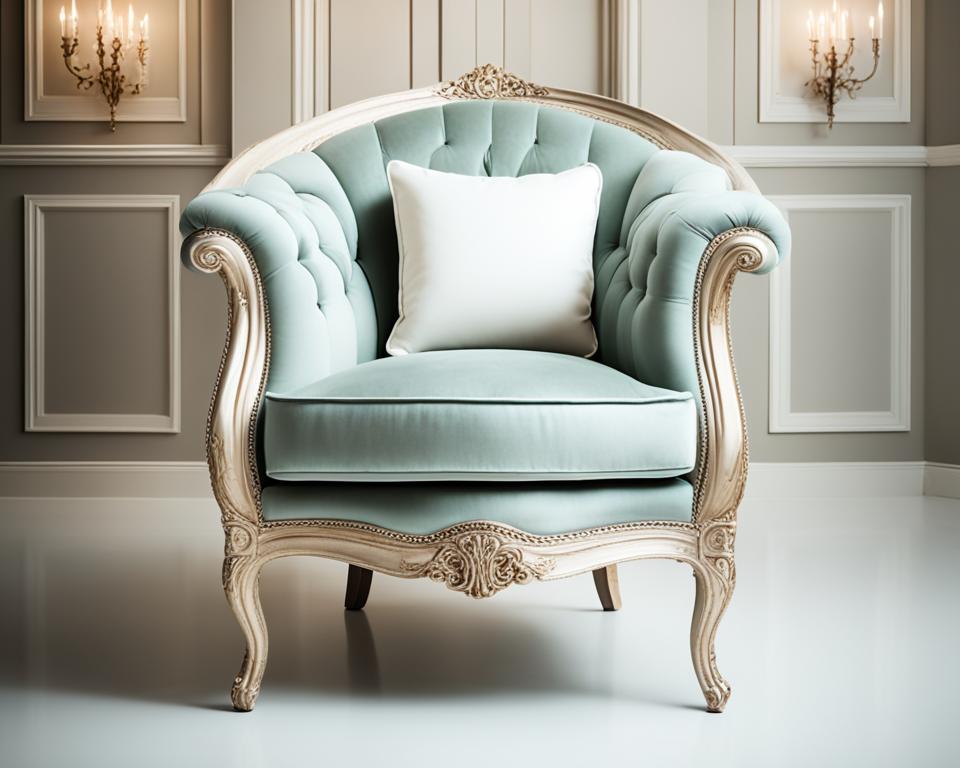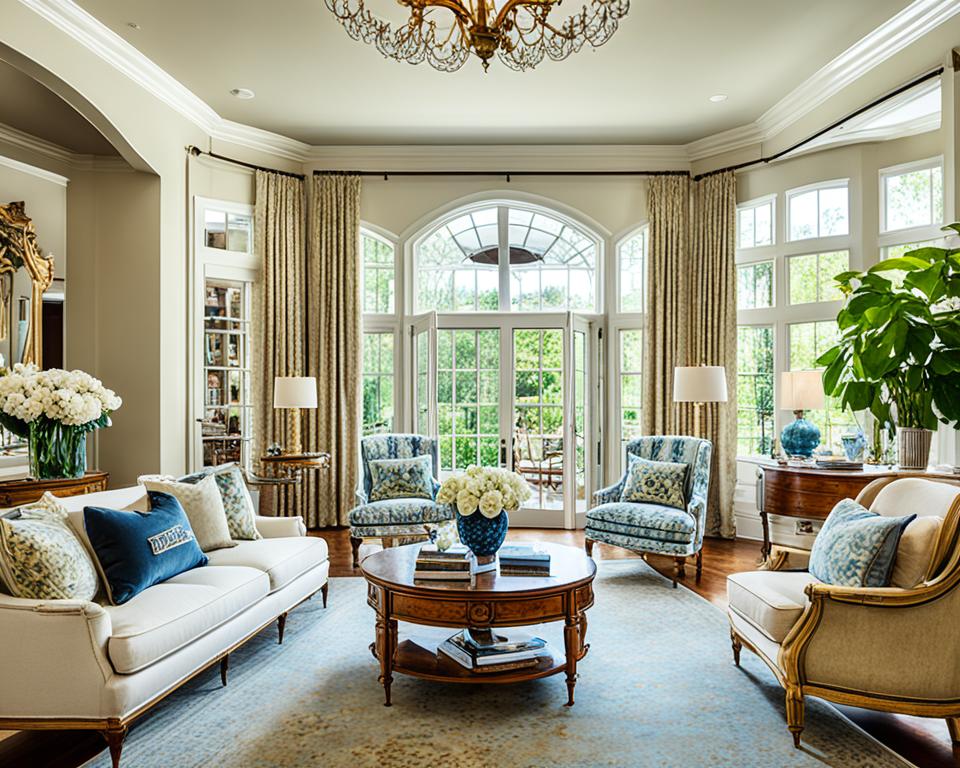
Antique furniture is not only a beautiful addition to any home but it can also be a smart investment. With the right knowledge and strategies, antique furniture can provide a high return on investment (ROI) and serve as a valuable asset in your portfolio. In this comprehensive guide, we will explore everything you need to know about antique furniture investment, including valuation, market trends, and investment strategies.
Key Takeaways:
- Antique furniture can be a lucrative investment with the potential for high ROI.
- Valuation plays a crucial role in determining the value of antique furniture.
- Staying informed about market trends and demand is essential for successful antique furniture investment.
- Diversifying your antique furniture collection can help mitigate risks and maximize potential returns.
- Proper preservation and maintenance are key to maintaining the value of antique furniture.
Understanding the Value of Antique Furniture
Antique furniture holds immense value, influenced by a range of factors including age, quality, condition, rarity, provenance, and aesthetics. To accurately determine the value of an antique piece, it is crucial to consult a professional antique furniture appraiser. Such appraisals consider various criteria and provide a certified opinion on the worth of the furniture. Furthermore, the market for antique furniture is subject to fluctuations, dictated by factors such as demand, trends, and the overall economy. Staying well-informed about current antique furniture market trends is crucial in making informed investment decisions.
Factors Influencing Antique Furniture Value
The value of antique furniture is determined by multiple factors:
- Age: Older pieces tend to hold greater historical significance and typically command higher value.
- Quality: Furniture made with superior craftsmanship, using high-quality materials, often retains higher value.
- Condition: Well-preserved and unaltered antique furniture is generally prized more among collectors.
- Rarity: Pieces that are unique or produced in limited quantities often have a higher market value.
- Provenance: Furniture with a documented history of ownership or connection to famous individuals can significantly influence its value.
- Aesthetics: The overall visual appeal and design of the furniture play a crucial role in determining its value.
These factors work in combination to shape the value of each individual antique furniture piece, making it essential to assess them holistically during the appraisal process.
Factors Influencing Antique Furniture Investment
Several factors can influence the success of an antique furniture investment. Understanding these factors is crucial in making informed investment decisions and maximizing your return on investment (ROI).
Demand from Antique Furniture Collectors
One important factor to consider is the demand from antique furniture collectors. Antique furniture collectors play a significant role in driving up prices for rare and desirable pieces. Their passion for antiquities and willingness to pay a premium for unique and highly sought-after items can greatly impact the value of your investment.
Tracking Current Antique Furniture Trends
Keeping an eye on current antique furniture trends is another key factor in successful investment. By staying informed about the latest trends in antique furniture, you can identify pieces that are in high demand and have the potential for appreciating in value. This knowledge allows you to strategically acquire furniture that aligns with popular styles, periods, or design aesthetics.
Potential Return on Investment (ROI)
The potential return on investment is an essential consideration when investing in antique furniture. While there are no guarantees, certain antique pieces have a track record of appreciating in value over time. Understanding the factors that contribute to the ROI of antique furniture, such as rarity, condition, and historical significance, can help you make informed decisions and maximize your investment potential.
By taking into account the demand from collectors, tracking current trends, and evaluating the potential ROI, you can navigate the antique furniture market with confidence and increase your chances of a successful investment.
| Factors Influencing Antique Furniture Investment | |
|---|---|
| Demand from Antique Furniture Collectors | ✓ |
| Tracking Current Antique Furniture Trends | ✓ |
| Potential Return on Investment (ROI) | ✓ |
Appraisal and Authentication
Appraisal and authentication play a vital role in the process of antique furniture investment. When considering the value of antique furniture, it is crucial to seek the expertise of a professional appraiser. Through a thorough evaluation, an appraiser takes into account various factors such as age, condition, provenance, and rarity to determine the accurate value of the antique piece. This appraisal provides valuable insights that can help you make informed investment decisions.
Authentication is another essential step in the antique furniture investment process. It ensures that the furniture is genuine and not a reproduction or fake. Authenticating antique furniture involves thorough research, examination of materials and construction techniques, and consultation with experts. By verifying the authenticity, you can be confident in the value and integrity of your antique furniture investment.
“Getting an accurate appraisal and authenticating your antique furniture not only provides peace of mind but also adds credibility to your investment.”
The Importance of Professional Appraisals
Professional antique furniture appraisals provide you with a certified opinion on the value of your antique piece. By relying on the expertise of an appraiser, you can be confident in the accuracy of the valuation. This knowledge empowers you to make well-informed investment decisions, whether you are buying, selling, or holding onto your antique furniture.
Authenticity and Value
Authenticating antique furniture ensures that you are investing in genuine pieces with real historical and artistic value. By confirming the authenticity of your furniture, you can safeguard against the risk of purchasing reproductions or fakes. This authentication process adds value to your investment, as genuine antique pieces have a higher market demand and appreciation potential over time.
Research and Consultation
Authenticating antique furniture requires thorough research and consultation with experts in the field. By investigating the historical context, examining the materials and construction methods used, and seeking guidance from knowledgeable individuals, you can gather the necessary evidence to authenticate your antique piece. This diligent effort ensures the integrity and credibility of your investment.
Appraisal and authentication are critical steps in the antique furniture investment process. They provide you with accurate valuations, protect against counterfeit pieces, and enhance the overall value of your investment. By obtaining professional appraisals and authenticating your antique furniture, you can make confident decisions and establish a solid foundation for your antique furniture portfolio.
Strategies for Antique Furniture Investment
When it comes to antique furniture investment, employing the right strategies can significantly enhance your chances of success. Here are a few key strategies to consider:
- Acquire rare and unique pieces: Focusing on acquiring antique furniture that is rare and unique can increase its potential for appreciation in value. These pieces often attract collectors and enthusiasts who are willing to pay a premium for their exclusivity and historical significance.
- Diversify your collection: Diversification is essential in mitigating the risks associated with antique furniture investment. Invest in different styles, periods, and types of furniture to spread your risk and capitalize on various market trends. This way, even if one particular type of antique piece may decline in value, others may experience growth.
- Stay informed about market trends: Keeping a pulse on the antique furniture market and staying informed about the latest trends is crucial for identifying investment opportunities. Knowledge of market demand, popular styles, and emerging trends can help you make well-informed buying and selling decisions.
By implementing these strategies, you can maximize the potential of your antique furniture investments and increase the likelihood of achieving favorable returns.

Example Table: Comparison of different antique furniture investment strategies
| Strategy | Pros | Cons |
|---|---|---|
| Focus on rare and unique pieces |
|
|
| Diversify your collection |
|
|
| Stay informed about market trends |
|
|
Preservation and Maintenance
Proper preservation and maintenance are crucial in maintaining the value and integrity of antique furniture. By taking the appropriate measures, you can ensure that your cherished pieces remain in excellent condition for years to come.
One of the key aspects of preserving antique furniture is protecting it from environmental factors. Sunlight, humidity, and temperature fluctuations can all have detrimental effects on the wood and finishes. It is recommended to position your antique furniture away from direct sunlight and heat sources, and to use curtains or blinds to filter out harmful UV rays.
Cleaning and dusting your antique furniture on a regular basis is essential to prevent the accumulation of dirt and debris, which can accelerate the deterioration process. When cleaning, avoid using harsh chemicals or abrasive cleaners, as they can damage the delicate surfaces. Instead, opt for a soft cloth or brush and gentle, non-abrasive cleaning solutions specifically formulated for wood.
Handling antique furniture with care is equally important. Avoid dragging or sliding pieces across the floor, as this can cause scratches and other damage. When moving furniture, lift it carefully and enlist the help of others if necessary to avoid accidents.
If restoration or repairs are required, it is crucial to seek the assistance of professionals who specialize in antique furniture restoration. They have the knowledge, skills, and expertise to handle delicate repairs and maintain the originality and value of the piece. Attempting DIY repairs can often result in irreparable damage and decrease the value of the furniture.
“Proper preservation and maintenance are essential for the longevity and value of antique furniture. By taking preventive measures and securing professional assistance when needed, you can ensure that your investment remains protected and retains its original charm.”– Antique Furniture Restoration Expert
